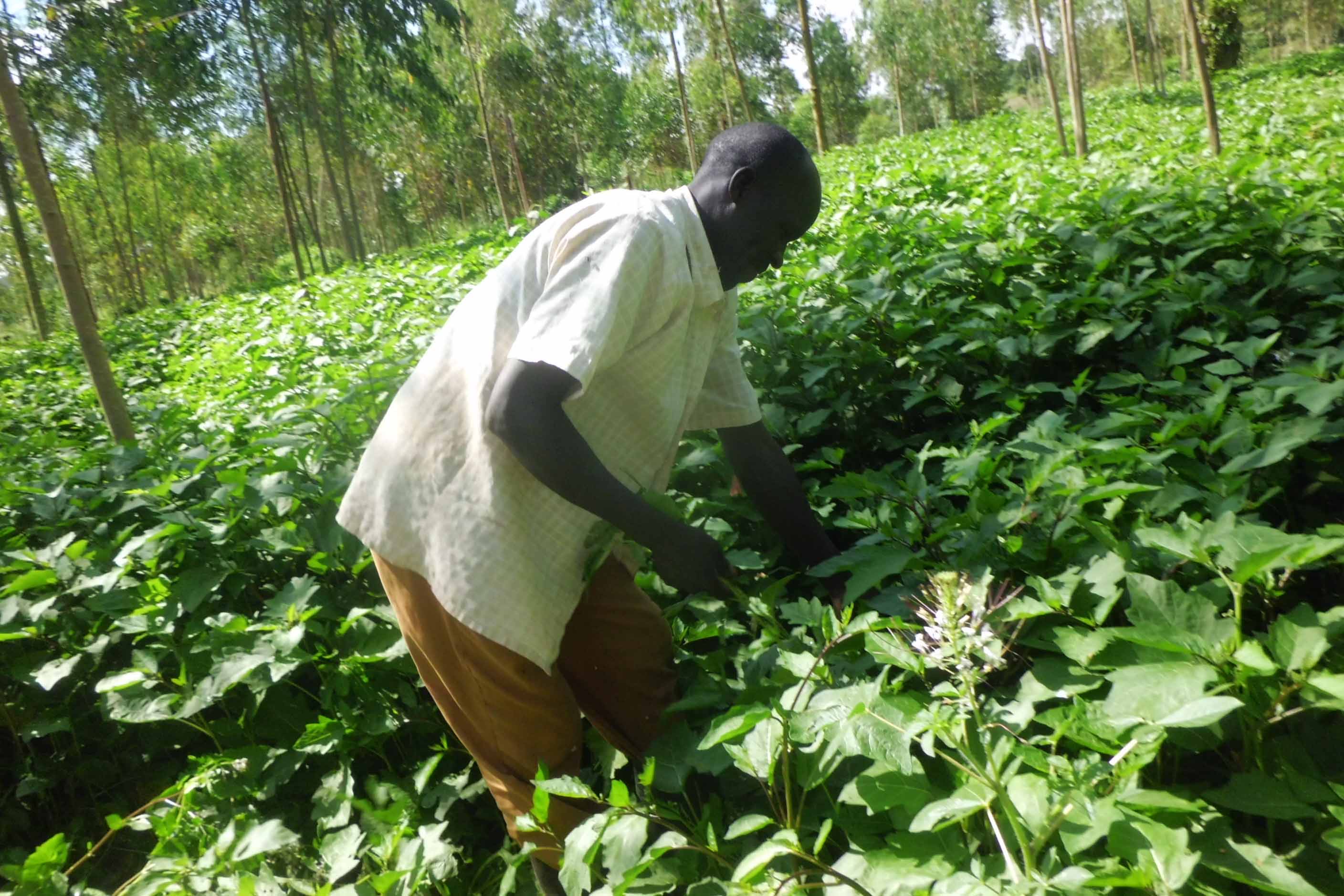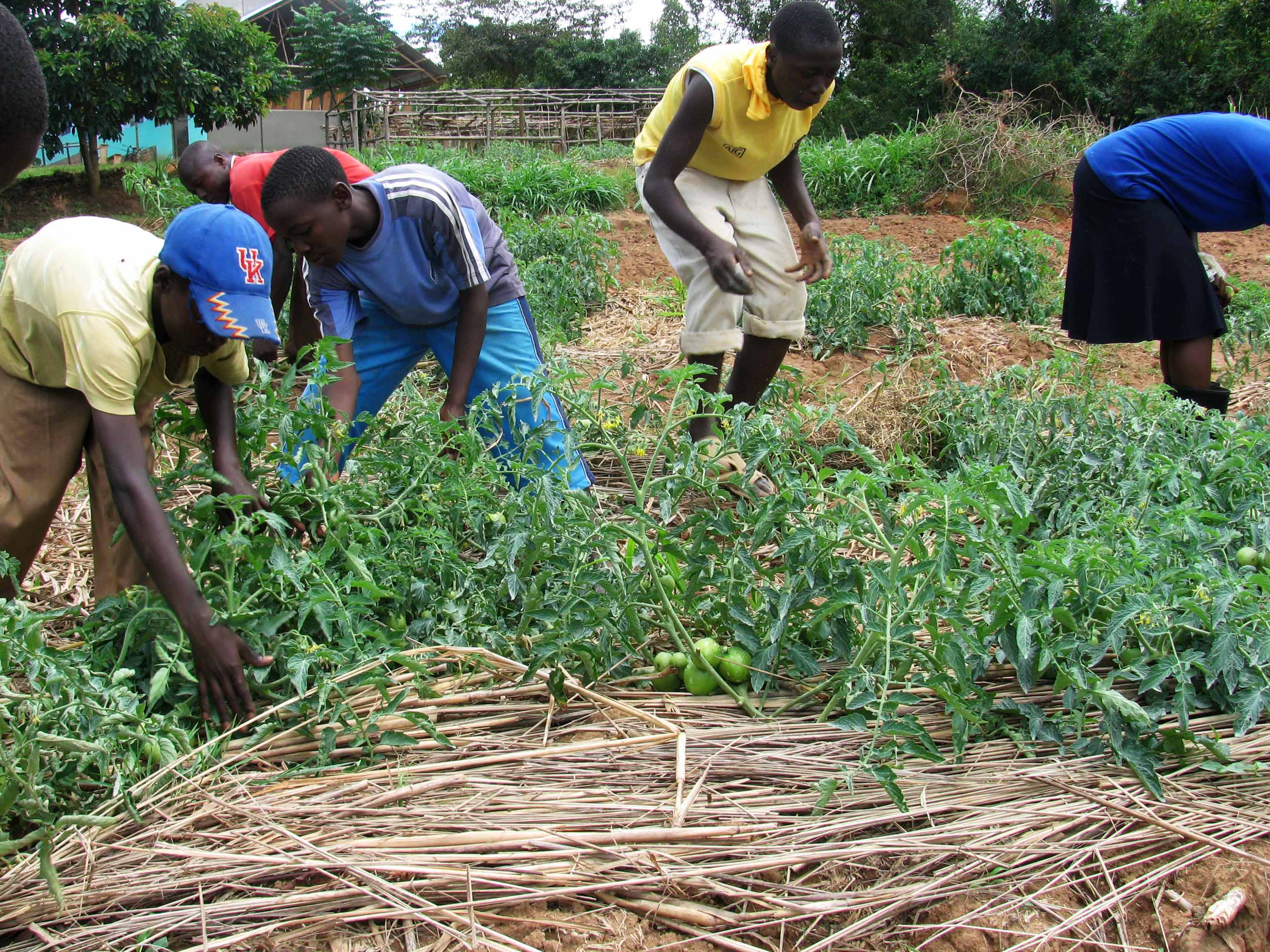Prime
How to get bumper harvest from vegetables

A farmer checks her tomato garden. Farmers are advised to apply organic fertiliser to increase their yield. PHOTO/MICHEAL KAKUMIRIZI.
What you need to know:
- Farmers intending to produce vegetable seed are advised to acquire breeder seed, preferably sowed directly or in nursery beds.
Vegetables serve as essential sources of vitamins, minerals, and income for those engaged in production and marketing. Increasing the availability, affordability, and consumption of vegetables is crucial for reducing malnutrition.
Experts recommend the consumption of traditional vegetable varieties such as nakati, cabbages, amaranth, cassava leaves, cowpea leaves, and malakwang due to their rich nutritional content, including vitamin A, B, and C, protein, and other minerals such as iron, calcium, phosphorous, iodine, and fluorine.
To enhance vegetable farming, farmers are urged to engage in processing their own seeds or access locally processed certified seeds to boost production for the growing demand.
Background
It is a well-known fact that most farmers growing various vegetable varieties procure seeds that are mostly imported into the country. However, ongoing initiatives by scientists aim to change this trend by breeding specific vegetable varieties locally under the VegeSeed Project.
This nine-year project, a collaboration between the National Agricultural Research Organisation (Naro) and the government of the Republic of Korea through KOICA, focuses on breeding selected vegetable varieties to process seeds for farmer accessibility.
The selected vegetables include cabbages, chili pepper, tomatoes, onions, and nakati (African Eggplant).
Breeding
Dr. Gabriel Ddamulira, the program leader for Horticulture and Oil at NaCRRI, emphasises the importance of processing vegetable seeds within the country to reduce the cost burden on farmers. Infrastructure, including greenhouses at NaCRRI, is in place for breeding, with trial sites in demonstration farms in Mukono and Luweero training selected farmers in seed processing.
Stella Birungi, a breeder, highlights the mindset change needed for farmers to appreciate the use of locally processed certified seeds.
Sensitisation exercises in Katoogo village, Nama Sub-county in Mukono District, engage farmers in the general training, with 20 selected to participate in seed breeding and processing initiatives. Farmers are trained on seed processing for tomatoes, onions, chili, nakati, and pumpkin to become suppliers to fellow farmers.
The breeding process is a participatory approach, engaging 20 farmers from Mukono and 20 from Luweero during the selection period. Germplasm of the concerned vegetables, including seeds from the Republic of Korea, is collected and screened during the breeding process to produce superior breeds.
Best Practices
John Gamusi, a breeder, emphasises the importance of using high-quality certified seeds for optimal yields. Farmers are advised on the differences between seed and grain, with classes involving registered seed processed by seed companies and seed processed by organised farmer groups, especially for vegetables like nakati.
According to him as long as farmers choose to use high quality certified seed, the yield of the produce will always be high to fetch a higher income.
Farmers intending to produce vegetable seed are advised to acquire breeder seed, preferably sowed directly or in nursery beds.
Nursery establishment
Establishing a nursery is crucial and can be done using available local materials. Farmers are guided to heap the soil and plant the seeds in polythene bags or seed beds. The soil for growing seedlings must be structured by boiling it to remove unwanted insects and diseases.
Land Preparation
Farmers are expected to prepare the land in advance at the onset of the rain season. Some farmers may grow vegetables in wetland plots during the dry season, requiring constant irrigation.
Planting recommendations include using 800gms of seed per acre, with specific spacing for different vegetable varieties.
Pests and diseases
Control measures for pests and diseases include planting resistant varieties, practicing crop rotation, and avoiding overhead irrigation to reduce humidity. Farmers are advised to apply recommended fungicides in case of severe attacks.
Harvesting
After harvesting, thorough cleaning and appropriate packaging are essential for fresh produce. Farmers intending to grow for seed processing must harvest mature seeds, ensuring proper drying, sorting, cleaning, and storage.
Farmer Experience
Charles Wakonyi, a vegetable farmer in Katoogo village, Nama sub-county in Mukono district, grows tomatoes, cabbages, and chili on his four-acre land.
He has been doing this for the last seven years but faces challenges of pests and diseases as well as high purchase pf seed especially for tomatoes with half a kg of seed costing Shs800, 000
However once he tends well to his tomato farm, he is able to harvest 50 boxes in an acre and each box is sold between Shs400, 000- Shs500, 000.
For the case of nakati, most farmers at the moment are processing their own seed. The price of chili is slightly low with 10gms costing Shs20, 000.
He emphasises the importance of locally bred and processed seed and envisions expanding his group’s focus to include vegetable seed production as a lucrative income-earning initiative.
Key fact
Success in vegetable production whether it is organic or not is greatly depended on a well thought out plant.
Key factors that should be considered carefully during the planning stage of the farming operation are: site selection, water supply and quality, crop and variety selection, and, market development.




